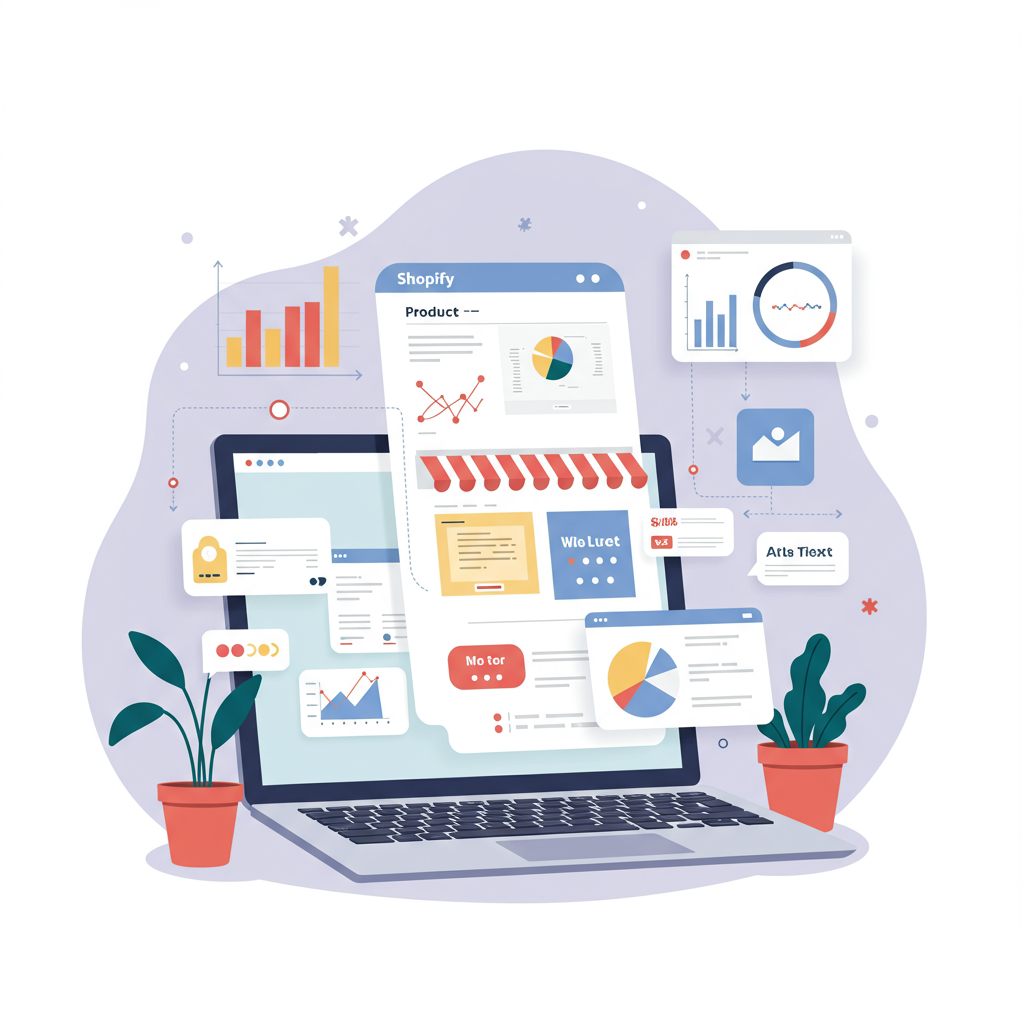Unlock the secrets to higher rankings and more sales by optimizing your Shopify product pages for search engines.
As an e-commerce merchant, you know that getting traffic to your store is only half the battle. The real magic happens when visitors land on your product pages and decide to make a purchase. But what if those potential customers can’t even find your products in the first place?
That’s where Search Engine Optimization (SEO) for your Shopify product pages comes in. It’s not just about ranking for your brand name; it’s about showing up when people search for the specific products you sell.
In this comprehensive guide, I’m going to walk you through my proven strategies for optimizing your Shopify product pages. My goal is to help you attract more organic traffic, improve user experience, and ultimately, boost your sales.
Let’s start with the absolute basics: your meta title and meta description. These are the first things searchers see in Google, and they play a crucial role in both ranking and click-through rates.
Your meta title, which you can edit in Shopify under ‘Search engine listing preview’ for each product, should be concise, keyword-rich, and compelling. I always recommend including your primary keyword, the product name, and perhaps your brand name.
The meta description, while not a direct ranking factor, is incredibly important for enticing clicks. Think of it as a mini-advertisement. I craft mine to be benefit-driven, highlighting unique selling points and including a call to action.
Before you even touch your product page content, you need to conduct thorough keyword research. This is the foundation of any successful SEO strategy, and it’s no different for product pages.
I focus on identifying keywords that potential customers would use when searching for your specific product. Think beyond generic terms; consider long-tail keywords that indicate purchase intent, like ‘organic cotton baby onesie 0-3 months’.
Tools like Google Keyword Planner, SEMrush, Ahrefs, or even just Google’s ‘People also ask’ and ‘Related searches’ sections can provide invaluable insights into what your audience is searching for. I use a combination to get a holistic view.
Once you have your target keywords, it’s time to optimize your product title. This is your H1 heading, and it should be clear, descriptive, and naturally incorporate your primary keyword. Avoid keyword stuffing; focus on readability.
Now, let’s talk about your product descriptions. This is where you can truly shine and provide value to your customers. I never just copy and paste manufacturer descriptions; I write unique, engaging content.
Your description should not only list features but also explain the benefits. How will this product solve a problem or improve your customer’s life? I use storytelling and vivid language to paint a picture.
I also make sure to naturally weave in my target keywords throughout the description. Break up long paragraphs with headings (H2, H3), bullet points, and bold text to improve readability and scannability for both users and search engines.
Images are vital for e-commerce, and they’re also a significant SEO opportunity. I always optimize my product images for both speed and search visibility.
This means using descriptive file names (e.g., ‘blue-leather-wallet.jpg’ instead of ‘IMG_001.jpg’) and, crucially, filling out the alt text field. Alt text should describe the image for visually impaired users and search engines, often including a keyword.
I also ensure my images are compressed to reduce file size without sacrificing quality. Faster loading images contribute to a better user experience and improved page speed, which Google loves.
Your product page URLs are another small but mighty SEO factor. Shopify generally creates clean URLs, but I always double-check that they are concise, descriptive, and include a relevant keyword if possible.
Internal linking is a powerful, often overlooked, SEO tactic. I strategically link from my product pages to related products, collections, or relevant blog posts. This helps distribute ‘link juice’ and keeps users engaged on my site.
Conversely, I also link to my product pages from relevant blog content. For example, if I write a blog post about ‘Top 5 Summer Dresses,’ I’ll link directly to the product pages for those dresses.
Product reviews are gold for SEO. They provide fresh, unique content, include natural language keywords, and act as powerful social proof. I actively encourage my customers to leave reviews.
Schema markup, specifically Product Schema, is essential for rich snippets in search results. This can display star ratings, price, and availability directly in Google, making your listing stand out. While Shopify handles some of this, I often use apps to enhance it further.
Page speed is a critical ranking factor and user experience element. I regularly check my product page loading times using tools like Google PageSpeed Insights and work to optimize images, reduce app bloat, and ensure my theme is efficient.
With the majority of online shopping happening on mobile devices, ensuring your product pages are mobile-responsive is non-negotiable. Shopify themes are generally responsive, but I always test them on various devices.
Finally, SEO is not a one-time task; it’s an ongoing process. I constantly monitor my product page performance using Google Analytics and Google Search Console.
I track keyword rankings, organic traffic to specific product pages, and conversion rates. This data helps me identify what’s working, what’s not, and where I need to make further optimizations.
Regularly updating product descriptions, adding new images, and encouraging fresh reviews are all part of my continuous improvement strategy. The digital landscape is always changing, and your SEO efforts should too.
What do you think about this article? I’d love to hear your thoughts and any strategies you’ve found successful for your Shopify product pages.
By implementing these strategies, you’ll be well on your way to improving your Shopify product page SEO, attracting more qualified traffic, and ultimately, driving more sales for your business. Happy optimizing!






